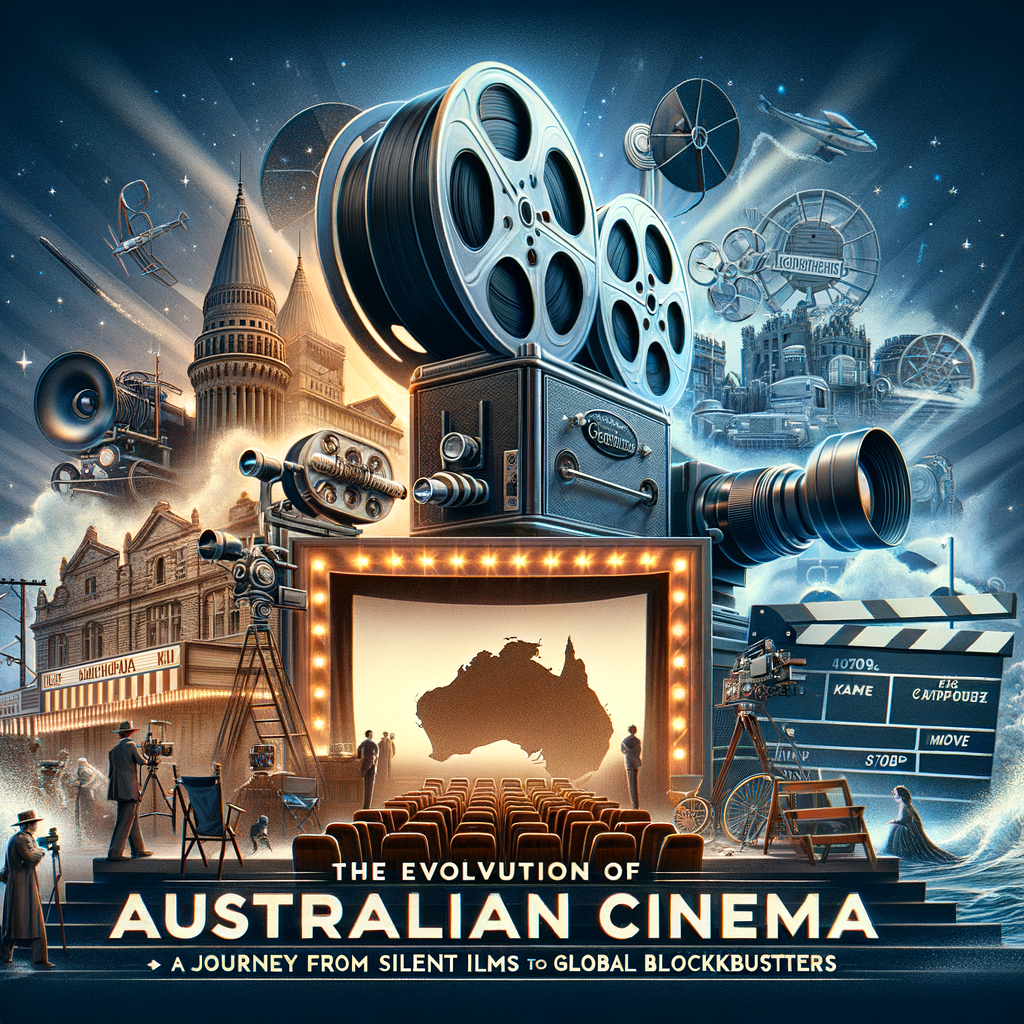Physical Address
304 North Cardinal St.
Dorchester Center, MA 02124
Physical Address
304 North Cardinal St.
Dorchester Center, MA 02124

When one thinks about the world of cinema, Hollywood often dominates the conversation. However, tucked away in the southern hemisphere is an industry that has been quietly making waves and producing critically acclaimed films for over a century — Australian cinema.
The story of Australian cinema begins in the early 20th century with what was predominantly a silent film era. Australia’s first full-length feature film, ‘The Story of the Kelly Gang’, was released in 1906. This silent movie was based on the infamous bushranger Ned Kelly and set a precedent for future narratives deeply rooted in Australian culture and history.
With the advent of sound technology in movies during the late 1920s, ‘talkies’ began to take over. Australia’s first talkie, ‘Fellers’ (1930), marked a significant turning point for Australian cinema. However, this period also saw a decline in local production due to competition from Hollywood imports and financial constraints from the Great Depression.
Australian cinema experienced its renaissance during the 1970s and 1980s under what is known as ‘The New Wave’. Government initiatives like establishing The Australian Film Commission (now Screen Australia) provided funding and support for local productions. This led to an influx of quality films that showcased unique Australian stories and landscapes.
Films like ‘Picnic at Hanging Rock’ (1975), ‘Mad Max’ (1979), and ‘Gallipoli’ (1981) emerged during this period, demonstrating a new level of artistic maturity and commercial success for Australian cinema.
The 1990s and early 2000s saw Australian cinema gain international recognition. Films such as ‘Strictly Ballroom’ (1992), ‘Muriel’s Wedding’ (1994), ‘The Adventures of Priscilla, Queen of the Desert’ (1994), and ‘Babe’ (1995) were not only commercial successes but also critically acclaimed.
Australian directors like Baz Luhrmann and Peter Weir started making their mark on the global stage. Moreover, Australian actors including Nicole Kidman, Hugh Jackman, Russell Crowe, Cate Blanchett, and Heath Ledger began to dominate Hollywood.
Today, Australian cinema continues to evolve and thrive. It has embraced diversity with films like ‘The Sapphires’ (2012) that tell indigenous stories. It has ventured into the realm of horror with movies like ‘Wolf Creek’ (2005). It has produced award-winning dramas such as ‘Lion’ (2016) and ‘The Dressmaker’ (2015). And it has continued its legacy of successful comedies with films like ‘The Castle’ (1997).
The industry’s growth is also reflected in its infrastructure. The Fox Studios Australia in Sydney is one of the largest film studios in the Southern Hemisphere, attracting major international productions such as ‘Star Wars: Episode II – Attack of the Clones’ (2002) and Marvel’s ‘Thor: Ragnarok’ (2017).
Australian cinema’s influence extends beyond its borders. Its unique storytelling style often focuses on raw human experiences against a backdrop of vast landscapes — a combination that resonates with audiences worldwide.
In addition to this, Australia’s world-class film schools have produced some of the most talented filmmakers and actors in the industry. Its exceptional film crews, state-of-the-art facilities, and diverse filming locations are sought after by international productions.
From its humble beginnings with silent films to producing global blockbusters, Australian cinema has come a long way. It continues to push boundaries, tell compelling stories, and make significant contributions to the world of cinema.